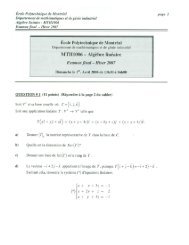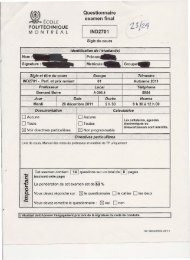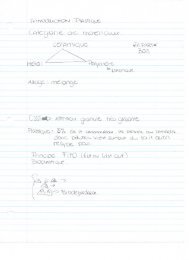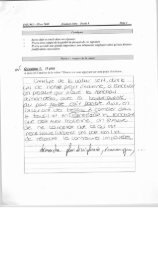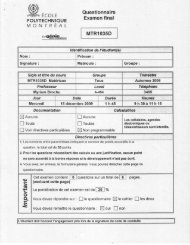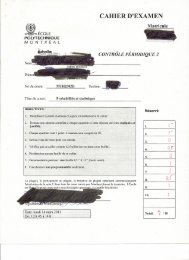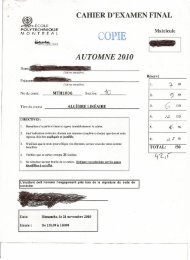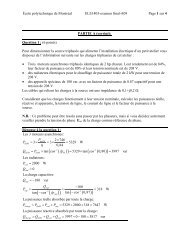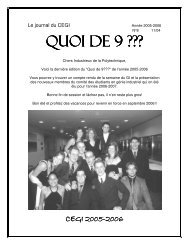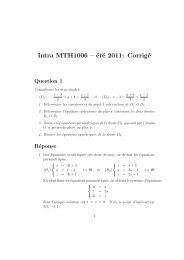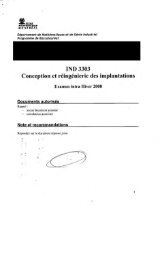HPR122i, HPR152i, HPR153i, HPR151i, HPR181i - STEP
HPR122i, HPR152i, HPR153i, HPR151i, HPR181i - STEP
HPR122i, HPR152i, HPR153i, HPR151i, HPR181i - STEP
Create successful ePaper yourself
Turn your PDF publications into a flip-book with our unique Google optimized e-Paper software.
12<br />
Front LED Switch<br />
The Front LED Switch, located on the rear panel, is used to enable or disable<br />
the LED located on the front of the enclosure near the bottom of the grill. Slide<br />
the switch to the ON position to enable the front LED and slide it to the OFF<br />
position to disable the front LED.<br />
Most applications merit the use of the Front LED so power status can be visually<br />
confirmed, easily and quickly. For applications where the LED may distract<br />
audience members, it is easily disabled by sliding the FRONT LED switch to<br />
the OFF position.<br />
Polarity Switch (<strong>HPR151i</strong> and <strong>HPR181i</strong>)<br />
When all loudspeakers in system are properly polarized, a positive polarity<br />
drive signal results in a forward excursion of all loudspeaker cones. This, in<br />
turn, sets up a positive reinforcement of the sound wavefront (each loudspeaker<br />
reinforces the actions of the other loudspeakers). This effect is most<br />
pronounced at low (bass) frequencies.<br />
If a loudspeaker is not properly polarized, its cone moves inward while the<br />
properly polarized loudspeaker’s cones move outward. The inward movement<br />
will effectively cancel the bass response of a similarly-sized driver in the system,<br />
resulting in a reduction in the bass content.<br />
It is critically important to maintain correct phasing in a loudspeaker system in<br />
order to realize maximum performance. Polarity can be altered by miswired<br />
input cables, interconnecting cables, mixer polarity switches set incorrectly,<br />
just to name a few likely culprits.<br />
To make matters a bit more complicated, phasing is also influenced by the<br />
position of loudspeakers with respect to one another and by their position in a<br />
given room. It is possible to have all loudspeakers polarized properly (electrically)<br />
and yet achieve better bass response by having the subwoofer reverse<br />
polarized. It is even possible to achieve improved bass response from the system<br />
with multiple subwoofers polarized differently. Be aware that perceived<br />
bass response also will change with the listener’s position, so move around<br />
the room (venue) when testing your setup.<br />
Because phasing problems can so drastically effect the bass output of a system,<br />
the subwoofers are equipped with a switch marked POLARITY. When set<br />
to NORMAL, the polarity is such that a positive going input will cause the cone<br />
to move outward. When set to REVERSE, the input signal has its polarity<br />
reversed and a positive going input will cause the loudspeaker’s cone to move<br />
inward.<br />
How to Use the Polarity Switch<br />
When using QSC subwoofers and QSC full range loudspeakers, NORMAL<br />
polarity will result in the best bass response IF the full range loudspeakers are<br />
sitting on or very close to the subwoofers. If the subwoofers are some distance<br />
away from the full range loudspeakers, polarity change may be of benefit.<br />
Start with all subwoofer POLARITY switches in the NORMAL position. This<br />
applies to systems with one subwoofer as well. Then, with your system at or<br />
near expected operating levels, change the polarity of each subwoofer INDI-<br />
VIDUALLY. Then walk around the venue and assess the overall bass response.<br />
Select the polarity that results in the best overall system bass response.<br />
Front LED switch.<br />
Polarity switch.<br />
IMPORTANT! If using full<br />
range loudspeakers from<br />
another manufacturer,<br />
we recommend they be<br />
connected to the QSC<br />
subwoofer’s 100 Hz LOW-<br />
CUT OUT. This will<br />
ensure proper polarity of<br />
the full range loudspeaker<br />
with respect to<br />
the subwoofer.




